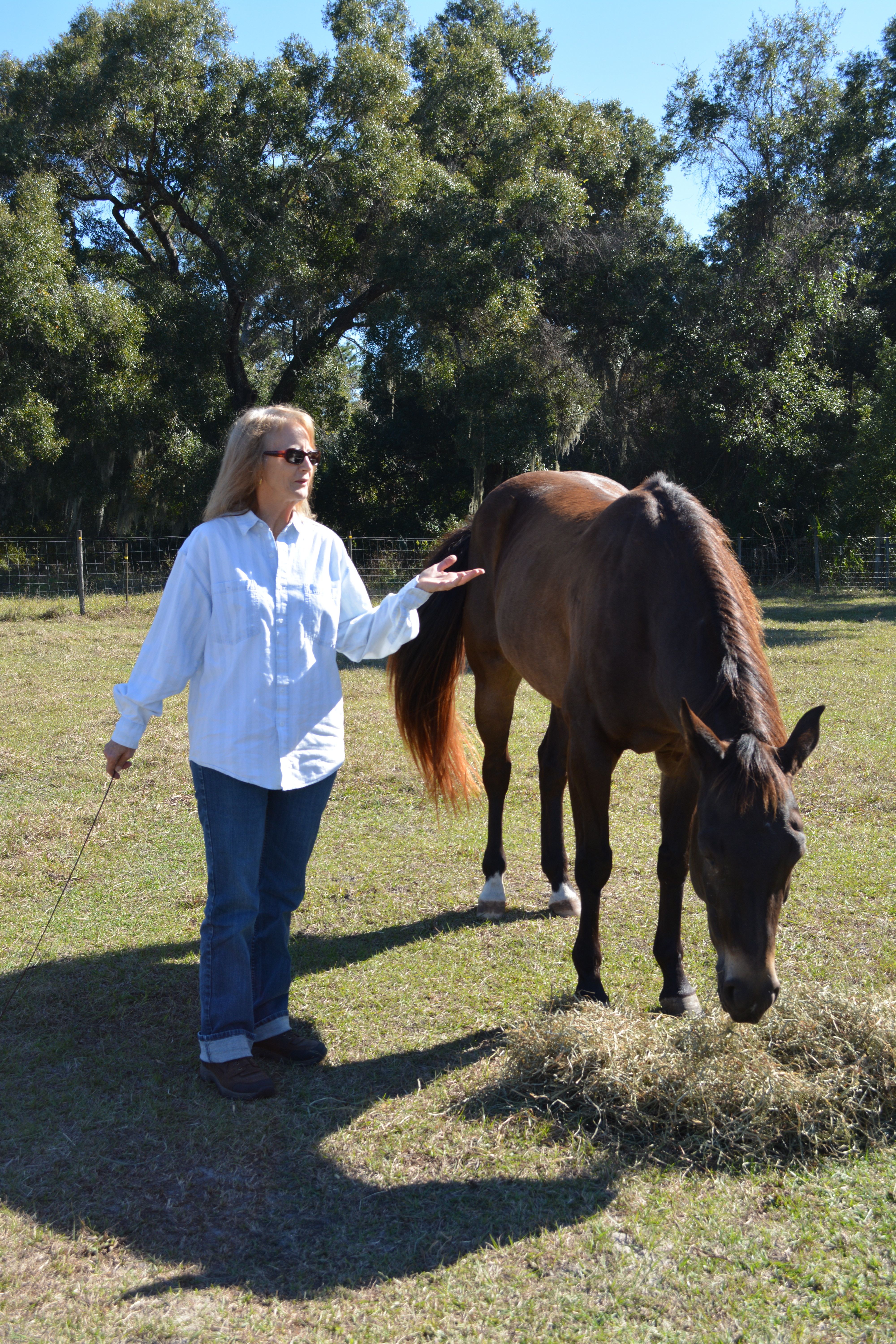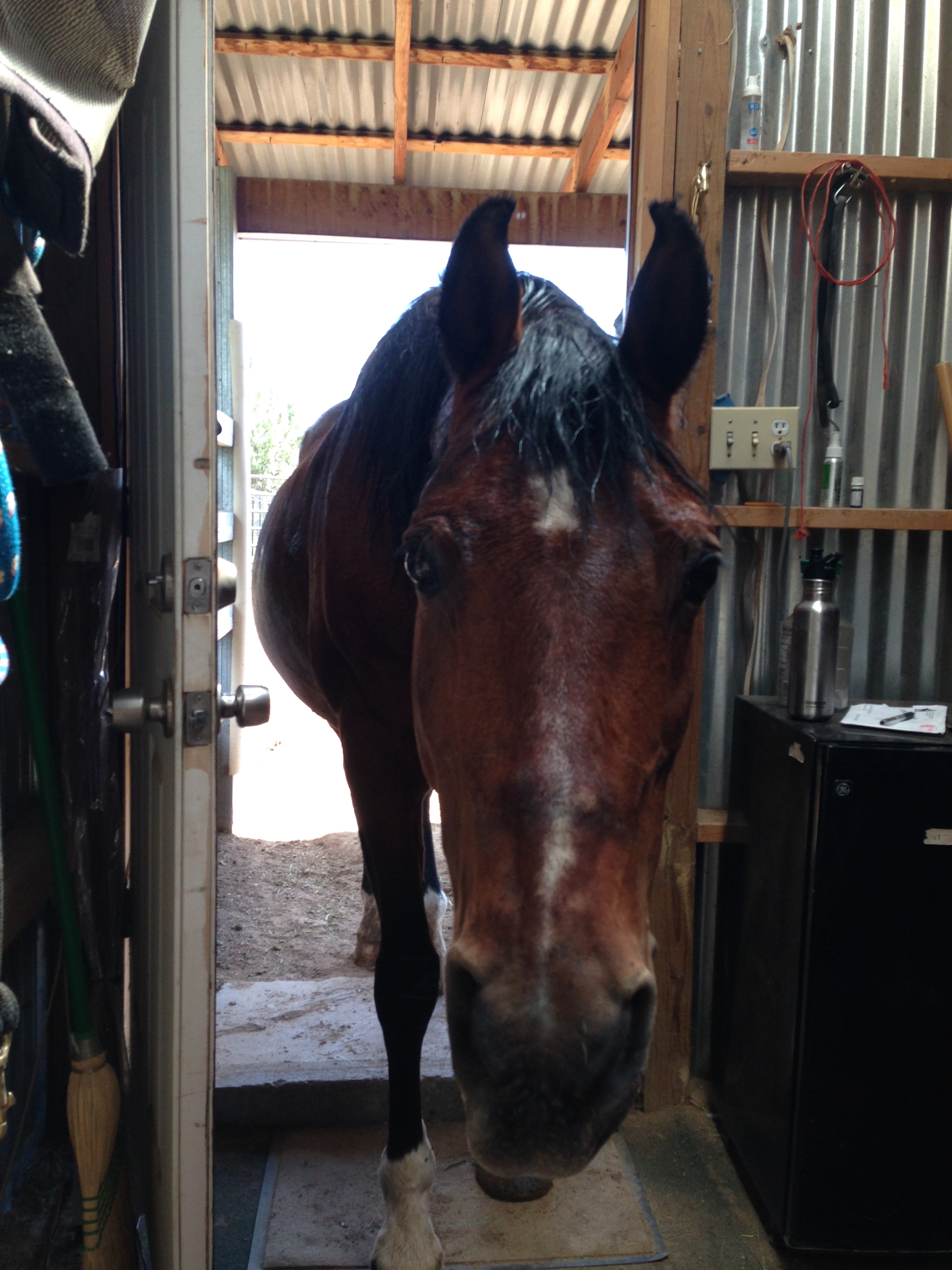We all want something from the horse. Otherwise most of us wouldn’t have one or work with one.
Our desire becomes a palpable entity that can also drive the horse away or make her nervous. She wants me to do something.
 I’ve talked alot about this in the past but I came up with something new about it. I’ve been recommending that we just put our desires, goals, expectations aside and then work with the horse with a clear heart and mind. Yes, I still say that.
I’ve talked alot about this in the past but I came up with something new about it. I’ve been recommending that we just put our desires, goals, expectations aside and then work with the horse with a clear heart and mind. Yes, I still say that.
But how do you honestly put aside all that you dream of for this horse and yourself? Do you just pack it in an old kit bag and smile, smile smile?
Probably not, because it’s really hard as humans to do that kind of thing.
So instead I ask you to ask yourself the question, what is it I want from my horse? What will I feel like when I get it? Is this conditional – as in, if he bonds with me in a certain way, will every thing be hunky dory?
When we sit with our horses and not focus on them, we begin the journey away from our wants and needs. This is the first step in really broadening our scope, as in  having a soft focus, taking in more than the horse, but the ground, grass, sea, whatever is surrounding you. It is a meditation, whether you bring a book, knitting, a broken piece of tack that needs mending, something to write or draw.
having a soft focus, taking in more than the horse, but the ground, grass, sea, whatever is surrounding you. It is a meditation, whether you bring a book, knitting, a broken piece of tack that needs mending, something to write or draw.
Sitting or standing with horses begins to dissipate the drive in humans. It helps to focus us on the small things in life. Tiny joys of living, rather than big grandstand goals. What this gives me in return, if I must speak of returns, is a horse who relaxes in my company. Ultimately, when I show interest in what my horse is interested in through further activites beyond sitting, I have a horse who is interested in me. Some of what I might be suggesting might actually be fun and interesting!
I don’t want to be dishonest in my approach to the horse and say oh, no I really don’t want you to do anything. That would be a lie. Horses can smell dishonesty a mile away. But what I can do is dissipate my pushy energy, my neediness, whatever it is that I dump on the horse to drive her away or make her a listless or agitated companion.
 My true interest in what the horse wants/needs, grows as I sit and do simple foundational work. In this activity, the horse will gain trust in me and not seek to go away so much. When I’m there, she might even think it would be fun to hang out with me, whatever I have in mind.
My true interest in what the horse wants/needs, grows as I sit and do simple foundational work. In this activity, the horse will gain trust in me and not seek to go away so much. When I’m there, she might even think it would be fun to hang out with me, whatever I have in mind.
This is different from what is known as “trained liberty,” where the horse is first worked in a halter and then convinced somehow to go at liberty after they have been worked on the lead for awhile. Or what some people call “at liberty” when the horse is being moved in the round pen.
I find that especially with a young horse, we are working toward riding and schooling in whatever discipline more than with the older ones. They need to know everything to be a good citizen in the world, but I start with the Liberty Foundations. With the older ones, I can sit with them and know what they have to offer in every fiber of their beings, based on many years together, settled into comfortable rhythms. I’m not expecting unless they have behavioral problems, but they still offer great and surprising gifts with sitting.
With a younger horse, I watch their eyes to make sure the activity we’re engaging in isn’t dulling. That the horse isn’t checking out because he knows how to do the activity like an automaton but he isn’t engaging with me. If he isn’t engaging with me, I change it up. I may go back to liberty or introduce something entirely new to engage curiosity. Then I may put him away for the day.
 My 25-year-old gelding, Khami, was trained traditionally to “do” things. Luckily he was always a happy horse and never mistreated, and he always enjoyed “doing” and performing with humans. What I want him to enjoy in his later years is the “being” with people as with his herd, without great expectations.
My 25-year-old gelding, Khami, was trained traditionally to “do” things. Luckily he was always a happy horse and never mistreated, and he always enjoyed “doing” and performing with humans. What I want him to enjoy in his later years is the “being” with people as with his herd, without great expectations.
It is a joy to me that Khami wants to walk with me, and be in deep connection. Although I don’t “want” much from him in terms of performance, the connection is there, the pleasure of each other’s company is there.
In answering my own question, that’s what I want for every horse, at every age, at every turning point in life.
****
(copyright: Susan Smith, OrthoHorse)
Services: Bodywork: (Ortho-Bionomy for people, Equine Ortho-Bionomy): private sessions, tutorials, phone consultations, Horse & Rider sessions, distance healing communication and gift certificates
Liberty Coaching: clinics, mini-clinics, workshops, private and semi-private sessions, tutorials, consultations: by appointment: 505.501.2478 or emailing susansmith@orthohorse.info Scheduling now. Contact me for details.
I’m now putting together the 2015 Clinic Calendar. Let me know if you want to do a clinic at your location. Prices will vary according to location.
January 27-March 10, 2015 – Horses at Liberty Online Advanced will continue the instruction for those students who have taken an introductory online or in-person clinic from me.
The work builds on what has been taught in the introductory course with refining movements, body language, knowing what and when to ask for change, celebrating the horse’s gifts of engagement. Cost: $311
Payment for the Advanced Online can be made by check, PayPal or credit card. A PayPal button for each of those events is available on the home page of my website, http://www.orthohorse.info
Susan is a member of the Independent Liberty Trainers Network. libertytrainersnetwork.com/



